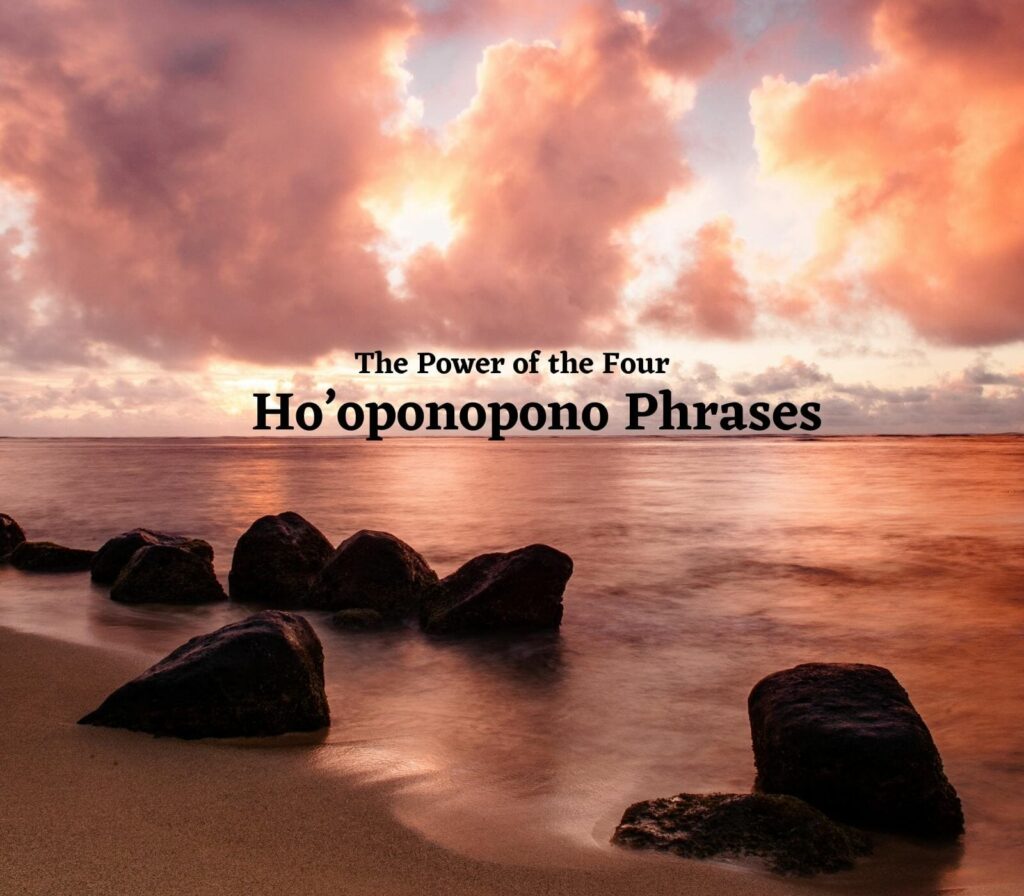In this article, we will explore the question of whether Ho’oponopono, a traditional Hawaiian practice, can provide support for those experiencing grief or loss. We’ll discuss the origins and principles of Ho’oponopono, as well as how it has been adapted for modern times. Additionally, we’ll delve into the potential benefits and limitations of using Ho’oponopono as a tool for healing emotional pain. By the end, you’ll have a better understanding of whether Ho’oponopono could be a helpful resource for coping with grief or loss in your own life.
Understanding Ho’oponopono
History and origins of Ho’oponopono
Ho’oponopono is an ancient Hawaiian practice that focuses on forgiveness, reconciliation, and healing. It has been used for centuries within Hawaiian communities as a way to resolve conflicts, restore harmony, and promote well-being. The word “Ho’oponopono” itself can be translated as “to make right” or “to correct an error.”
The roots of Ho’oponopono can be traced back to the early Polynesians who settled in Hawaii. They believed that conflicts and disharmony within a community were caused by “hala,” or errors, which could be physical, mental, or spiritual in nature. Ho’oponopono was developed as a way to address and rectify these errors through open dialogue, forgiveness, and prayer.
The concept of forgiveness in Ho’oponopono
Ho’oponopono places a strong emphasis on forgiveness as a means of healing and transformation. In the practice, forgiveness is considered a powerful tool for releasing negative emotions, letting go of the past, and creating space for healing and growth.
Forgiveness in Ho’oponopono is not about condoning or accepting harmful actions, but rather about choosing to release the negative energy associated with an event or person. It is about taking responsibility for one’s own emotions and reactions. By forgiving others and oneself, individuals can free themselves from the burden of grief, anger, and resentment.
The role of spirituality in Ho’oponopono
Spirituality is an integral part of Ho’oponopono, as it encompasses concepts such as mana (divine power) and pono (righteousness). The practice is deeply rooted in the belief that everything in the universe is connected, and that healing can occur through the restoration of spiritual balance.
In Ho’oponopono, individuals are encouraged to connect with their higher selves, their inner wisdom, and the divine in order to seek guidance, forgiveness, and healing. Prayers, meditation, and chanting are often used as spiritual practices to deepen this connection.
The Relationship Between Ho’oponopono and Grief
Exploring the connection between Ho’oponopono and grief
Grief is a complex and multifaceted emotional response to loss. It can manifest in various forms, such as the loss of a loved one, a job, a relationship, or even a sense of identity. The experience of grief is deeply personal and unique to each individual.
Ho’oponopono can offer a unique approach to grief by addressing the emotional and spiritual aspects of the healing process. It provides a framework for individuals to acknowledge and process their grief, while also offering tools for finding forgiveness, acceptance, and peace.
How Ho’oponopono can aid in the grieving process
Ho’oponopono can aid in the grieving process by providing individuals with a structured and compassionate way to navigate their emotions. The practice encourages individuals to take responsibility for their own healing, to acknowledge their pain and sorrow, and to seek forgiveness for themselves and others.
By practicing Ho’oponopono, individuals can release the heavy burden of grief, as well as any feelings of guilt, anger, or regret that may accompany it. This can help create a space for healing, transformation, and eventual acceptance of the loss.
The benefits of using Ho’oponopono for grief or loss
Using Ho’oponopono for grief or loss can offer several benefits. Firstly, it provides a framework for individuals to process their grief in a healthy and constructive manner. By actively engaging in a practice that focuses on forgiveness and healing, individuals can create a sense of purpose and direction in their grieving process.
Secondly, Ho’oponopono promotes self-reflection and personal growth. By taking responsibility for their own emotions and reactions, individuals can develop a deeper understanding of themselves and their grief. This self-awareness can lead to greater self-compassion, resilience, and a more positive outlook on life.
Finally, Ho’oponopono offers a sense of connection and support. By engaging in a practice that has been used for centuries by Hawaiian communities, individuals may feel a sense of belonging and unity with others who have also experienced grief and loss.
Applying Ho’oponopono for Grief and Loss
Steps to practicing Ho’oponopono for grief
-
Acknowledge your grief: Take the time to acknowledge and accept your emotions, without judgment or resistance. Allow yourself to feel the pain, sadness, and anger that may accompany grief.
-
Take responsibility: Recognize that you have the power to heal and transform your grief. Take responsibility for your own emotions and reactions, without blaming yourself or others.
-
Practice forgiveness: Make a conscious effort to forgive yourself and others for any perceived wrongdoings or hurts. This can be done through prayer, meditation, or simply stating your intention to forgive.
-
Repeat healing phrases: Use healing phrases such as “I love you,” “I’m sorry,” “Please forgive me,” and “Thank you” as a mantra during your practice. These phrases can help release negative energy and promote healing.
-
Seek support: Consider seeking support from a therapist, counselor, or support group who can provide additional guidance and assistance in your grieving process.
Tools and techniques for using Ho’oponopono in times of loss
-
Journaling: Write down your thoughts, feelings, and experiences related to your grief. This can help you gain clarity and insight, as well as provide a record of your healing journey.
-
Rituals and ceremonies: Create personal rituals or ceremonies that honor your grief and loss. This can include lighting candles, creating a memorial altar, or engaging in activities that bring you comfort and solace.
-
Visualization: Use visualization techniques to imagine releasing your grief and embracing healing. Visualize yourself surrounded by love, forgiveness, and peace.
-
Chanting or singing: Incorporate chanting or singing into your practice. This can help raise your vibration and create a sense of connection with the divine.
Personal stories and testimonials about using Ho’oponopono for grief
Many individuals have found solace and healing through the practice of Ho’oponopono during times of grief and loss. Personal stories and testimonials highlight the transformative power of forgiveness, self-reflection, and spiritual connection.
One individual shared their experience of using Ho’oponopono after the loss of a loved one. Through the practice, they were able to release feelings of guilt and regret, and find a sense of peace and acceptance. Another individual found comfort and healing by connecting with their ancestors through Ho’oponopono, experiencing a deep sense of support and guidance.
These personal stories and testimonials serve as a testament to the potential of Ho’oponopono as a tool for navigating grief and loss, and inspire others to explore the practice for themselves.
Scientific Perspectives on Ho’oponopono
Research studies on the effectiveness of Ho’oponopono
Although limited, some research studies have explored the potential effectiveness of Ho’oponopono in various contexts, including grief and loss. One study examining the impact of Ho’oponopono on grief symptoms found a significant reduction in grief-related distress and an improvement in overall well-being among participants.
Another study focused on the psychological effects of Ho’oponopono, suggesting that the practice can help individuals develop a greater sense of emotional well-being, as well as reduce symptoms of depression and anxiety.
While these studies provide preliminary evidence of the potential benefits of Ho’oponopono, further research is needed to explore its effectiveness in larger and more diverse populations, as well as its long-term impact on grief and loss.
Understanding the mechanisms behind Ho’oponopono’s impact on grief
The mechanisms behind Ho’oponopono’s impact on grief are not yet fully understood. However, some theories suggest that the practice promotes healing through a combination of forgiveness, self-reflection, and spiritual connection.
By actively engaging in forgiveness, individuals can release the negative emotions associated with grief and cultivate a sense of peace and acceptance. Self-reflection allows individuals to gain a deeper understanding of their grief and themselves, promoting personal growth and resilience. Finally, the spiritual aspect of Ho’oponopono connects individuals with a higher power, providing comfort, guidance, and support during the grieving process.
Critiques and skepticisms of Ho’oponopono for grief
Ho’oponopono, like any therapeutic or spiritual practice, has its skeptics and critics. Some argue that the practice may oversimplify the complex nature of grief and loss, and may not address deeper emotional wounds or trauma.
Others criticize Ho’oponopono for potentially perpetuating a sense of individual blame and responsibility for one’s own grief. They argue that external factors and circumstances beyond an individual’s control can greatly influence the experience of grief and may require additional therapeutic interventions.
While these critiques should be taken into consideration, it is important to remember that Ho’oponopono is not meant to replace traditional therapy or counseling. It can, however, be used as a complementary practice to support individuals in their grieving process.

Ho’oponopono vs. Other Grief Counseling Methods
Comparing Ho’oponopono to traditional grief counseling techniques
Ho’oponopono differs from traditional grief counseling techniques in several ways. While traditional counseling primarily focuses on verbal communication and cognitive processes, Ho’oponopono incorporates spiritual and emotional aspects into the healing process.
Traditional grief counseling often encourages individuals to express their emotions, work through their grief, and develop coping strategies. Ho’oponopono, on the other hand, emphasizes forgiveness, self-reflection, and spiritual connection as key components of healing.
Both approaches have their merits and can be effective, depending on an individual’s preferences and needs. It may be beneficial to work with a trained therapist or counselor who can integrate elements of both approaches, tailoring the treatment to the individual’s unique circumstances.
The role of both individual and collective forgiveness in Ho’oponopono
In Ho’oponopono, both individual and collective forgiveness play integral roles in the healing process. Individual forgiveness involves releasing negative emotions, such as anger and resentment, towards oneself and others. It is about taking responsibility for one’s own emotions and reactions, and choosing to let go of the past.
Collective forgiveness, on the other hand, involves acknowledging and seeking forgiveness from others. It is about recognizing the interconnectedness of all beings and the impact of our actions on others. By seeking forgiveness from others, individuals can repair and restore relationships, creating a sense of harmony and unity within their community.
By incorporating both individual and collective forgiveness into the practice of Ho’oponopono, individuals can experience a deeper level of healing and transformation.
How Ho’oponopono can complement other approaches to grief or loss
Ho’oponopono can complement other approaches to grief or loss by providing individuals with additional tools and perspectives for healing. It can serve as a complementary practice to traditional therapy or counseling, offering individuals a holistic and integrated approach to their grieving process.
The emphasis on forgiveness and spiritual connection in Ho’oponopono can help individuals find peace and acceptance during times of grief, while traditional counseling can provide a safe space for exploring emotions, developing coping strategies, and addressing any underlying psychological issues.
By combining various approaches, individuals can create a personalized healing journey that best suits their individual needs and preferences.
Overcoming Challenges and Resistance in Ho’oponopono
Addressing skepticism and doubts about Ho’oponopono’s effectiveness for grief or loss
It is not uncommon for individuals to approach Ho’oponopono with skepticism or doubts about its effectiveness for grief or loss. However, it is important to remember that the practice of Ho’oponopono is deeply rooted in cultural and spiritual traditions that have been passed down through generations.
One way to address skepticism is to educate oneself about the origins, principles, and potential benefits of Ho’oponopono. Understanding the cultural context and the experiences of those who have found healing through the practice can help dispel doubts and open oneself to the possibilities.
Additionally, seeking guidance from a trained Ho’oponopono practitioner or participating in workshops or group sessions can provide a supportive environment where questions can be addressed and experiences can be shared.
Dealing with resistance or emotional blocks during Ho’oponopono practice
Resistance or emotional blocks may arise during the practice of Ho’oponopono, particularly when addressing deep-seated emotions or unresolved grievances. It is important to approach these challenges with patience, compassion, and self-care.
If resistance arises, it may be helpful to take a step back and reassess your intentions and motivations for practicing Ho’oponopono. Are you truly ready and willing to forgive and let go? Reflecting on your intentions can help you identify any underlying fears or resistance that may be hindering your progress.
It can also be beneficial to seek support from a therapist, counselor, or Ho’oponopono practitioner who can provide guidance and personalized strategies for working through resistance and emotional blocks.
Tools and strategies to maintain commitment to Ho’oponopono in the face of setbacks
Maintaining commitment to Ho’oponopono practice can be challenging, especially in the face of setbacks or when progress seems slow. Here are some tools and strategies that can help:
-
Set realistic expectations: Understand that healing is a journey and that it takes time. Set realistic expectations for yourself and celebrate even small milestones along the way.
-
Establish a routine: Incorporate Ho’oponopono into your daily routine, whether it is through morning or evening rituals, or by practicing during moments of quiet reflection throughout the day.
-
Find accountability: Share your commitment to Ho’oponopono with a trusted friend or family member who can provide support and hold you accountable. Consider joining support groups or online communities where you can connect with others who are also practicing Ho’oponopono.
-
Prioritize self-care: Taking care of yourself physically, emotionally, and spiritually is essential in maintaining commitment to Ho’oponopono. Make time for activities that bring you joy, relaxation, and peace.
Remember that setbacks are a normal part of the healing process. Be gentle with yourself and trust in the power of Ho’oponopono to guide you through the challenges.

The Ethical and Cultural Considerations of Ho’oponopono
Respecting the cultural origins and traditions of Ho’oponopono
Ho’oponopono originates from the indigenous Hawaiian culture and is deeply rooted in their traditions, beliefs, and values. It is essential to approach the practice with respect, cultural sensitivity, and a commitment to preserving the integrity of the practice.
It is important to educate oneself about the cultural origins and traditions of Ho’oponopono, and to avoid appropriating or exploiting the practice. This includes understanding the significance of language, symbols, and rituals associated with Ho’oponopono, and using them in an authentic and respectful manner.
Ensuring ethical practice of Ho’oponopono in relation to grief
When using Ho’oponopono in relation to grief, it is crucial to approach the practice ethically. This means respecting the autonomy and individuality of each person’s grief journey, and not attempting to impose or force forgiveness upon oneself or others.
It is important to remember that Ho’oponopono is a personal practice, and individuals should be given the space and freedom to explore their own emotions, beliefs, and healing process. It is inappropriate to pressure or shame someone into practicing Ho’oponopono or seeking forgiveness before they are ready.
By approaching Ho’oponopono with ethical considerations, individuals can ensure that the practice is used in a supportive and empowering way, and does not contribute to further harm or distress.
Avoiding cultural appropriation and understanding the context of Ho’oponopono
Cultural appropriation is a significant concern when it comes to the practice of Ho’oponopono. As a practice deeply rooted in Hawaiian culture, it is essential to approach Ho’oponopono with cultural sensitivity and respect.
Avoid appropriating or commodifying Ho’oponopono by understanding and honoring its cultural context. This includes refraining from using Ho’oponopono as a trendy or commercialized self-help tool, and instead approaching it with a genuine desire for healing, growth, and connection.
It is also important to recognize that cultural contexts may vary, and that there are different interpretations and practices of Ho’oponopono. Being mindful of these variations and seeking guidance from a trained practitioner or respected community member can help ensure a respectful and culturally appropriate approach to Ho’oponopono.
Practitioner Perspectives and Recommendations
Insights and experiences from Ho’oponopono practitioners who have worked with grief or loss
Practitioners of Ho’oponopono who have worked with individuals experiencing grief or loss offer valuable insights and experiences. They highlight the potential of Ho’oponopono to provide a unique and holistic approach to healing, and emphasize the importance of individualized care and support.
These practitioners often emphasize the power of forgiveness, self-reflection, and spiritual connection in the healing process. They provide guidance and personalized strategies for individuals to navigate their grief and find peace. Their experiences serve as a source of inspiration and guidance for those seeking to incorporate Ho’oponopono into their grieving process.
Tips and guidance for individuals seeking to use Ho’oponopono for their own grieving process
For individuals seeking to use Ho’oponopono for their own grieving process, here are some tips and guidance:
-
Start with self-care: Prioritize your own well-being by engaging in self-care activities such as exercise, meditation, or spending time in nature. Taking care of yourself physically, emotionally, and spiritually is essential in the healing process.
-
Seek support: Reach out to a therapist, counselor, or support group who can provide guidance and additional support. They can help you navigate your grief and offer personalized strategies for incorporating Ho’oponopono into your healing journey.
-
Set intentions: Clarify your intentions and goals for practicing Ho’oponopono. Reflect on what you hope to achieve through this practice, and commit to staying open and patient throughout the process.
-
Embrace forgiveness: Be open to the process of forgiveness, both for yourself and others. Acknowledge that forgiveness does not necessarily mean condoning or forgetting, but rather choosing to release negative emotions and find peace.
-
Trust the process: Healing takes time, and each individual’s journey is unique. Trust in the power of Ho’oponopono to guide you through your grief and provide the healing and transformation you seek.
Support and resources available for those practicing Ho’oponopono in relation to grief or loss
For those practicing Ho’oponopono in relation to grief or loss, there are various support and resources available. These include:
-
Online communities and forums: Connect with others who are also practicing Ho’oponopono for grief or loss. These communities provide a space for sharing experiences, offering support, and learning from one another.
-
Books and literature: Explore books and literature on Ho’oponopono that specifically address grief or loss. These resources can provide guidance, inspiration, and practical techniques for incorporating Ho’oponopono into your healing journey.
-
Workshops and retreats: Attend workshops or retreats that focus on Ho’oponopono and grief. These immersive experiences provide an opportunity to learn from experienced practitioners, engage in healing rituals, and connect with others on a similar path.
It is important to seek out reputable sources and practitioners who honor and respect the cultural origins and traditions of Ho’oponopono.

Case Studies and Success Stories
Real-life examples of individuals who have found solace and healing through Ho’oponopono during grief or loss
Real-life examples of individuals who have found solace and healing through Ho’oponopono during grief or loss are powerful testimonies to the potential of the practice.
One individual shared their experience of practicing Ho’oponopono after the loss of a loved one. Through the practice, they were able to release feelings of guilt, anger, and regret, and find a sense of peace and acceptance. Another individual found healing through Ho’oponopono by connecting with their ancestors, experiencing a deep sense of support and guidance during their grieving process.
These case studies highlight the transformative power of forgiveness, self-reflection, and spiritual connection within the practice of Ho’oponopono. They serve as inspirational stories of resilience, growth, and healing.
Analyzing specific cases of successful Ho’oponopono practice for grief
Analyzing specific cases of successful Ho’oponopono practice for grief allows us to gain insight into the ways in which the practice can be applied and adapted to individual circumstances.
In one case study, an individual used Ho’oponopono to navigate the complex emotions and grief surrounding the loss of a child. Through a combination of forgiveness, self-reflection, and spiritual connection, they were able to release their anger and sadness, find acceptance, and create a sense of peace within themselves.
Another case study focused on a group of individuals who came together to practice Ho’oponopono in a community setting following a collective loss. Through shared rituals, open dialogue, and the cultivation of forgiveness and unity, the community was able to find healing and support one another.
These specific cases of successful Ho’oponopono practice for grief demonstrate the adaptability and effectiveness of the practice in various contexts.
Sharing inspirational stories of transformation and growth through Ho’oponopono
Sharing inspirational stories of transformation and growth through Ho’oponopono emphasizes the potential of the practice to bring about profound shifts and healing.
One such story involves an individual who experienced multiple losses in a short period of time. Through the practice, they were able to release their grief, find forgiveness, and cultivate a deep sense of gratitude for the lessons learned through their experiences.
Another inspirational story highlights the journey of a grieving parent who used Ho’oponopono to find peace and acceptance after the loss of their child. Through forgiveness and self-reflection, they were able to transform their grief into a source of strength and resilience, and actively contribute to the healing of their community.
These stories serve as reminders of the transformative power of Ho’oponopono and inspire others to explore the practice for themselves.
Conclusion
Can Ho’oponopono help with grief or loss? The question remains open, as the effectiveness of Ho’oponopono for grief and loss may vary for each individual. However, the potential benefits of Ho’oponopono in navigating grief and finding healing are evident.
By understanding the history, concepts, and mechanisms behind Ho’oponopono, individuals can gain insights into how the practice can support them in their grieving process. By applying the tools and techniques of Ho’oponopono, individuals can create a space for forgiveness, self-reflection, and spiritual connection.
Scientific perspectives, practitioner recommendations, and personal stories all contribute to the growing body of knowledge and understanding of Ho’oponopono’s potential benefits for grief and loss.
Ultimately, the decision to explore and practice Ho’oponopono for grief and loss is a deeply personal one. It is important to approach the practice with an open mind, a willingness to explore, and a commitment to self-care and healing.


